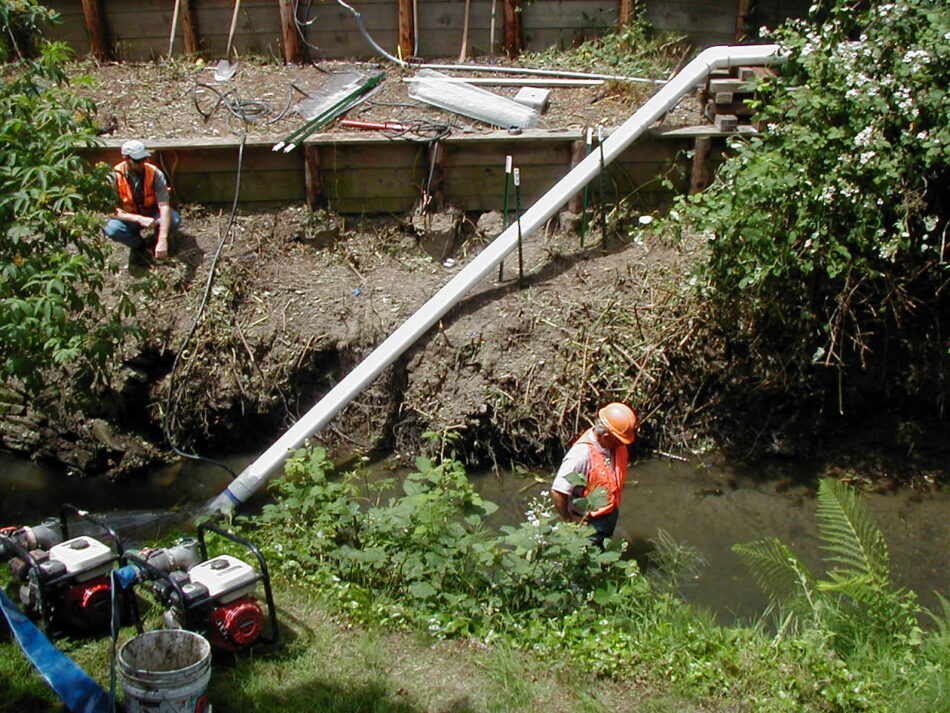
1.) This salmonoid-producing stream, in Ferndale California, needed to be blocked off upstream and down so that a box culvert/bridge could be renovated. The 6-inch white plastic pipe was used to transport pumped water around the work site. The two 3-inch discharge pumps were used to fill the AquaDam.
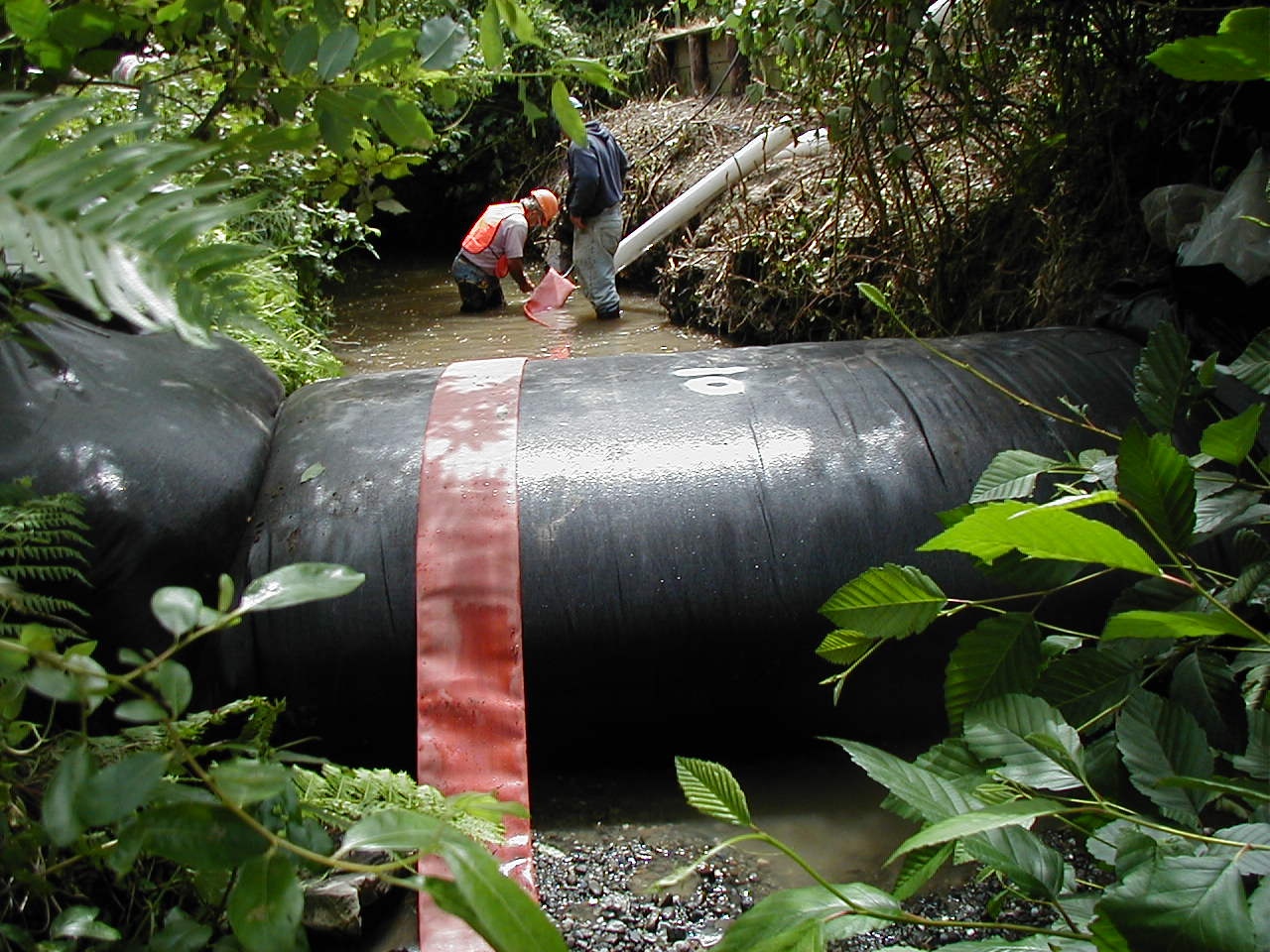
2.) This is a 3ft tall by 25ft long double open end (DOE) AquaDam, that took approximately ten minutes to fill with water. This unit was installed in a line configuration (bank to bank). The 6-inch red hose was also used for bypass discharge.
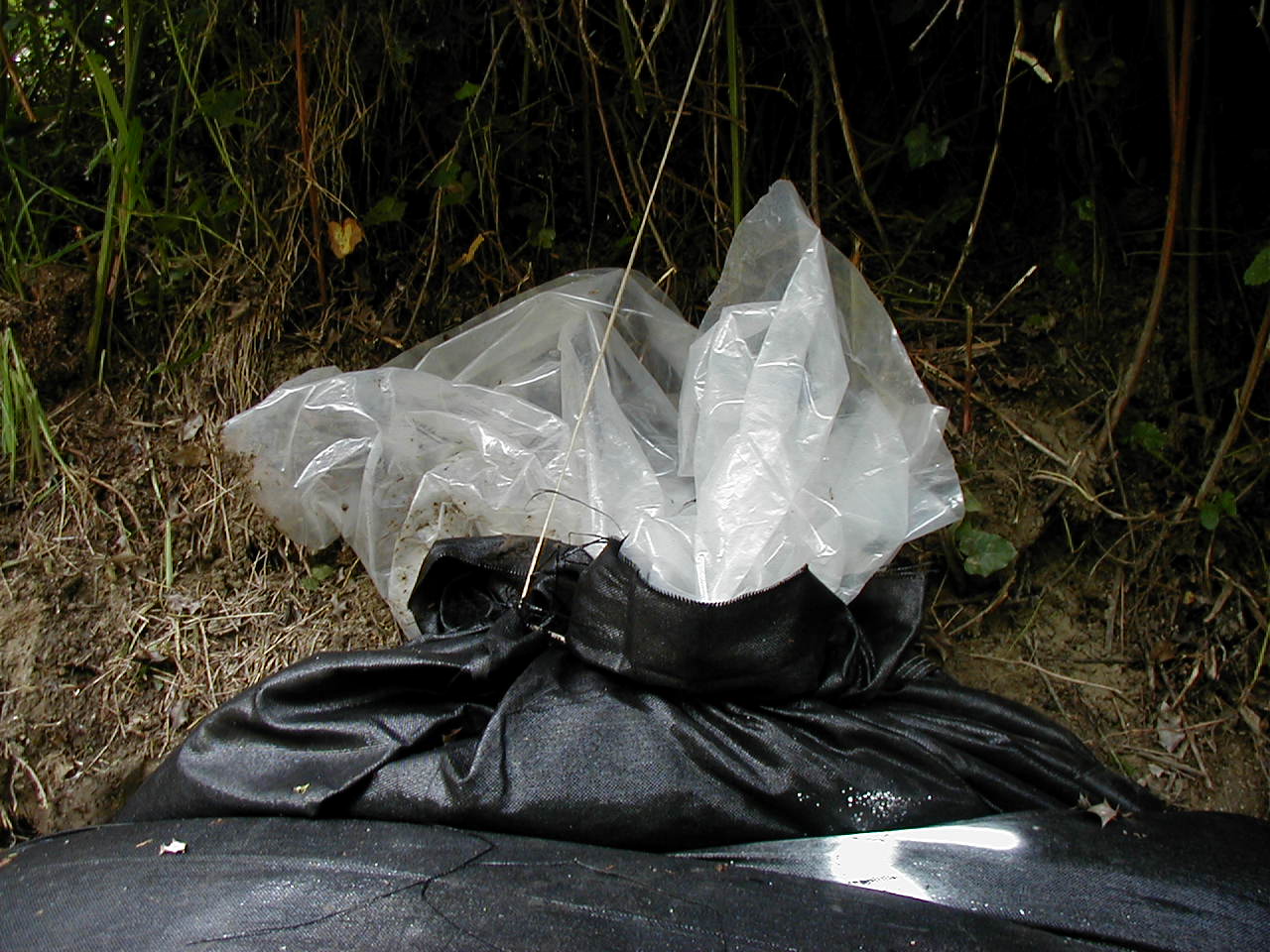
3.) The one of the open ends and fill-tubes of the 3ft tall DOE AquaDam have been secured up the starting bank an additional 2ft (for a total of 5ft above the streambed). The clear plastic fill tubes extended up past the open end of the AquaDam. Leaving extra material upon the starting bank allowed the AquaDam to be tied off to a tree above it. This kept the open end and fill tubes from falling over. The open end and fill-tubes of a DOE AquaDam must be elevated higher than the full height of dam along its given path. An AquaDam will only reach its full height at the lowest elevation along its given path.
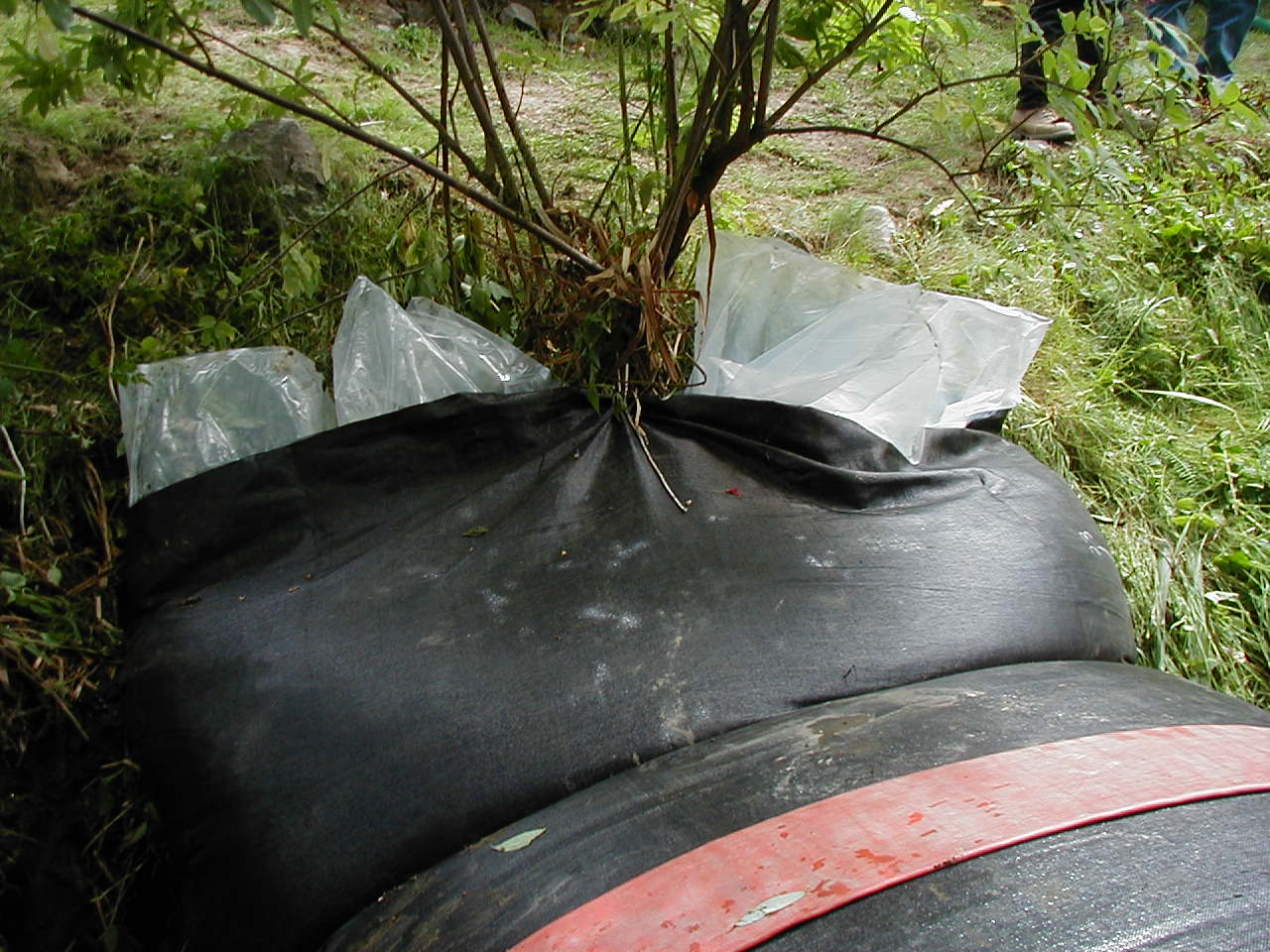
4.) Discharge hoses were inserted into the fill-tubes (clear plastic) to fill the AquaDam with water from the stream using water pumps. Since this is a DOE AquaDam, it could have been filled from either end. This end also extended an extra 2ft up the bank.
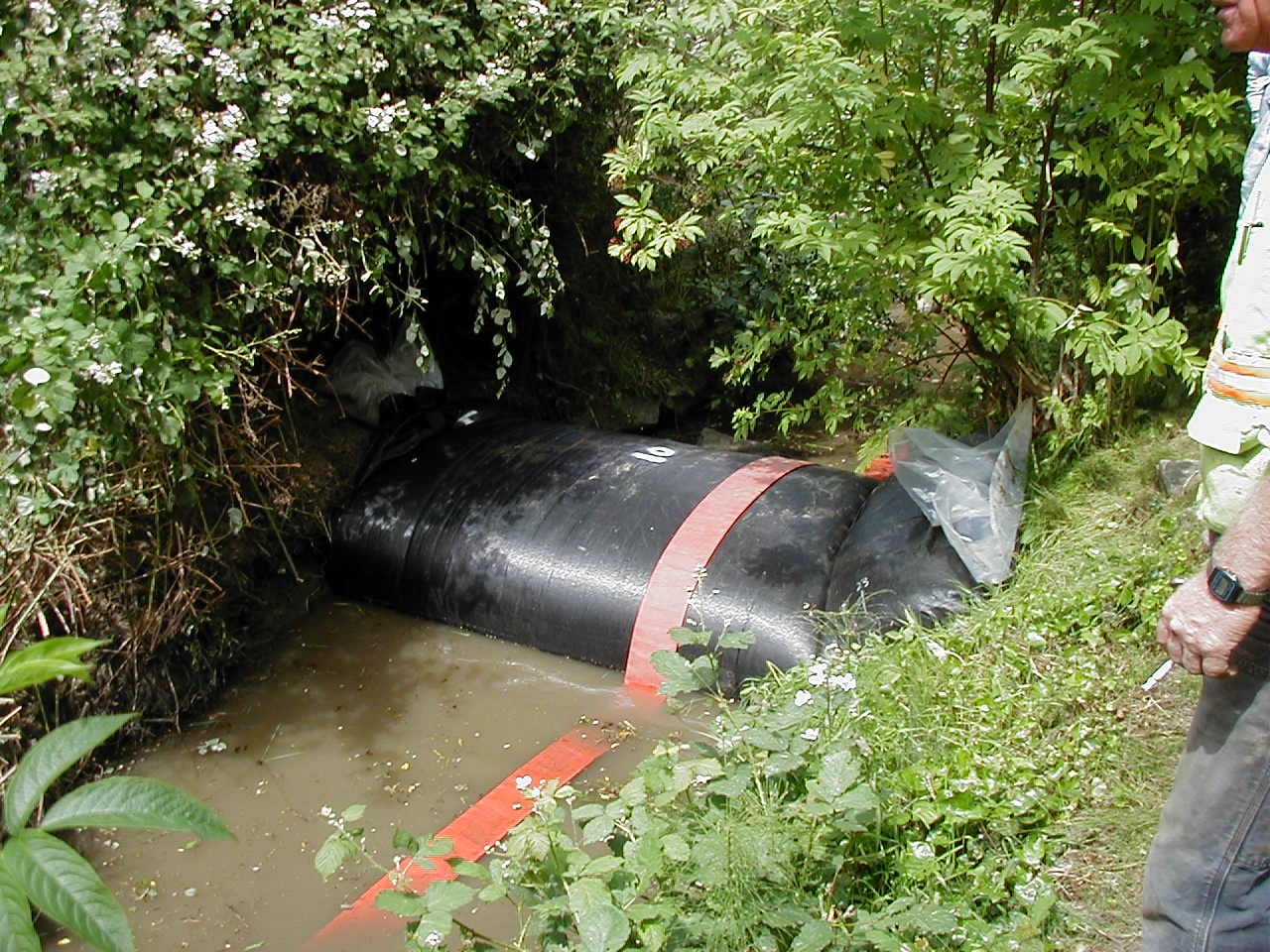
5.) A top view of the 3ft tall AquaDam fully installed. The sides of the channel are very steep, but the lightweight AquaDam was easy to maneuver into place.
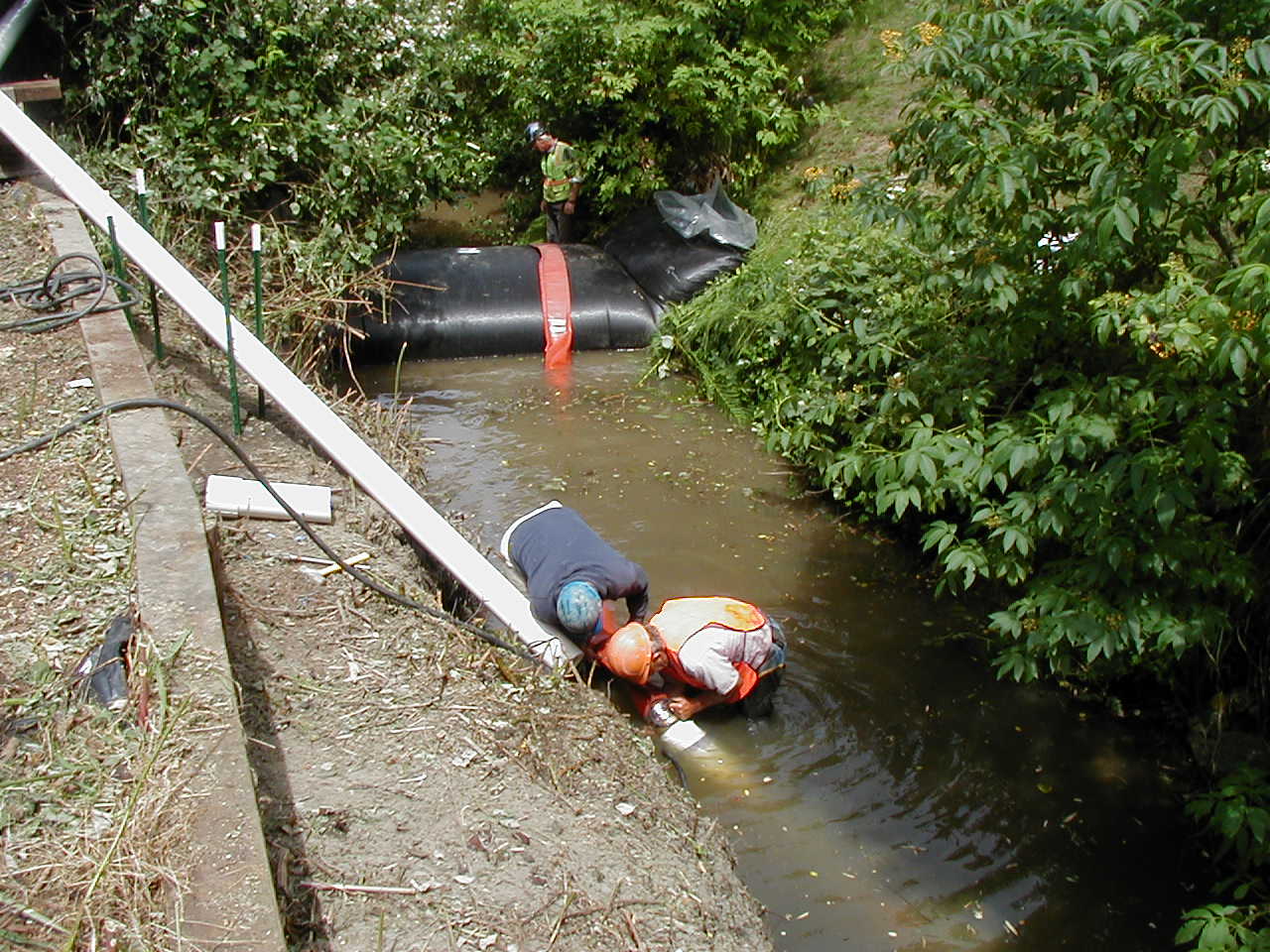
6.) The pooling water backing up behind the AquaDam finally became deep enough to use the 6-inch bypass pump. The workers were making last-minute preparations. If the stream’s flow is not diverted, it will eventually overcome the height of the AquaDam, causing it to wash out.
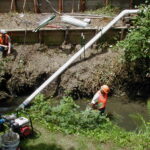
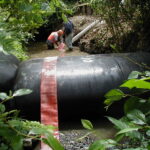
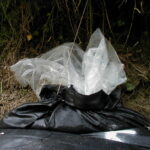
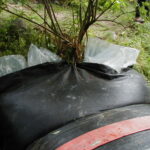
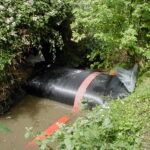
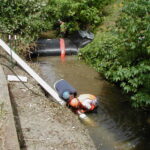
3ft Tall 7ft Wide (full) 25ft Long Double Open End (DOE) AquaDam, Stream Diversion, Pump Around Diversion, Line Configuration, Bridge Repairs
